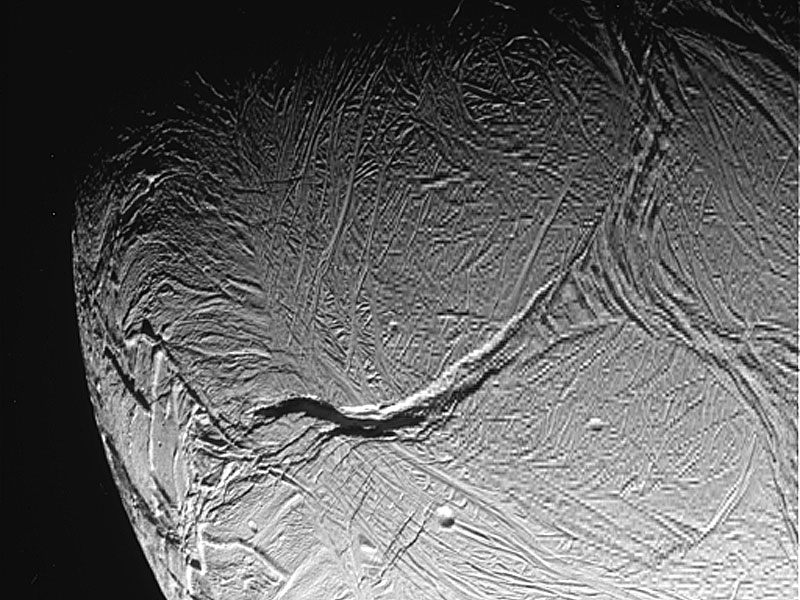An Enceladus Tiger Stripe from Cassini

Explanation:
What creates the unusual tiger stripes on Saturn's moon Enceladus?
No one is sure.
To help find out, scientists programmed the robotic
Cassini spacecraft
to dive right past the
plume-spewing moon last week.
Previously, the
tiger stripe regions
were found to be expelling plumes of water-ice, fueling
speculation that liquid seas might
occur beneath
Enceladus'
frozen exterior.
Such
seas are so interesting because they are
candidates to contain extraterrestrial life.
Important processes in tiger
stripe formation may include
heating from below and
moonquakes.
Visible above is terrain on Enceladus so young that only a few craters are visible.
This newly released raw image shows at least
one type of false artifact, however, as seeming
chains of craters are not so evident in
other concurrently released images of the same region.
The large
tiger
stripe across the image middle
is impressive not only for its length and breadth,
but because a large internal
shadow
makes it also appear quite deep.
Cassini will
next fly by Enceladus on October 31.
Authors & editors:
Robert Nemiroff
(MTU) &
Jerry Bonnell
(USRA)
NASA Web Site Statements, Warnings,
and Disclaimers
NASA Official: Jay Norris.
Specific
rights apply.
A service of:
LHEA at
NASA /
GSFC
& Michigan Tech. U.

